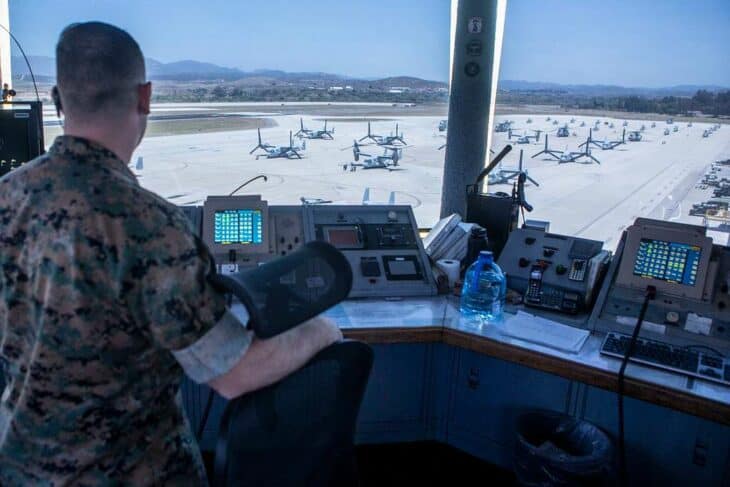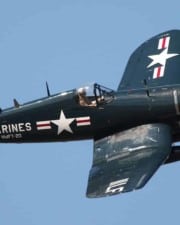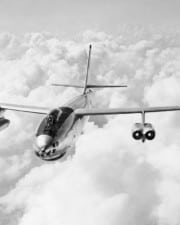DEFCON, short for “Defense Condition,” is a term used by the United States Department of Defense to describe various levels of military readiness and alert status. It is a numerical scale with five levels, ranging from DEFCON 5 (the lowest level of readiness) to DEFCON 1 (the highest level of readiness). These levels are used to communicate the current state of military preparedness and the perceived threat level to military personnel and government officials.
The DEFCON levels are as follows:
- DEFCON 5: Normal readiness – At this level, there is no specific threat, and the military is operating at a peacetime baseline readiness level.
- DEFCON 4: Increased readiness – This level indicates an increased risk of conflict, but there is no imminent threat of war. Military forces may be placed on higher alert.
- DEFCON 3: Enhanced readiness – DEFCON 3 signifies a more significant and immediate threat, where there is a possibility of military action. Troops may be mobilized, and additional measures may be taken to prepare for potential hostilities.
- DEFCON 2: High readiness – This level is a step away from the highest state of readiness. It is reserved for situations where a severe threat or crisis is imminent, but actual hostilities have not yet begun. Forces are placed on high alert, and military operations may be imminent.
- DEFCON 1: Maximum readiness – DEFCON 1 represents the highest state of readiness, indicating that a nuclear war or a major military conflict is imminent or in progress. All available military forces are prepared to respond immediately.
It’s important to note that DEFCON is a U.S.-specific system and is primarily used by the U.S. military and government. Other countries may have their own systems for assessing and communicating military readiness levels. The DEFCON system is not typically disclosed to the public, and changes in DEFCON levels are usually communicated internally within the U.S. military and government.
DEFCON 5: Normal Readiness
DEFCON 5 represents a state of normal military readiness and is essentially a peacetime baseline. In the context of aviation, this means that civilian and military air operations continue as usual without any specific security or threat concerns. Airports and airspace are open, and commercial flights operate without restrictions.
Military aircraft may conduct routine training exercises, but there are no elevated security measures in place. Air traffic controllers and aviation authorities maintain their standard procedures, and travelers experience minimal disruptions related to defense readiness.
DEFCON 4: Increased Readiness
DEFCON 4 indicates an elevated risk of conflict, but not an imminent threat. In the aviation sector, this level may result in heightened security measures at airports and air bases. There may be increased surveillance of airspace, and military aircraft may conduct more frequent and visible training exercises.
Commercial aviation operations continue, but airports may implement stricter security protocols, including enhanced passenger and baggage screening. Airlines may receive advisories regarding potential airspace restrictions or security concerns, and pilots and air traffic controllers remain vigilant while monitoring for any unusual activity.
DEFCON 3: Enhanced Readiness
DEFCON 3 signals a more significant and immediate threat, where military action is possible. Aviation plays a critical role in this state of readiness. Military aircraft are prepared for rapid response, and their presence in the airspace may increase.
Civilian aviation may be affected by airspace restrictions and flight path alterations to ensure the protection of sensitive military assets. Commercial flights may experience delays or diversions due to heightened security measures, and air traffic controllers closely coordinate with military counterparts to manage airspace safely. Airlines receive specific guidance on avoiding potential conflict zones or restricted areas.
DEFCON 2: High Readiness
DEFCON 2 is just one step below the highest level of readiness, indicating a severe threat that may lead to military hostilities. In aviation, this level involves a significant increase in military aircraft activity and readiness. Airspace restrictions become more extensive, and commercial flights may face significant disruptions.
Airports and air bases implement stringent security measures, and military aircraft may be on standby for immediate response. Civilian airlines may experience widespread flight cancellations or rerouting to avoid areas of potential conflict. Air traffic controllers are in constant communication with military authorities to ensure the safety and security of the airspace.
DEFCON 1: Maximum Readiness
DEFCON 1 represents the highest level of military readiness, indicating that a nuclear war or a major military conflict is either imminent or already underway. In the aviation sector, this level has the most profound impact on operations.
Civilian aviation is drastically affected as commercial flights are typically suspended, and airspace is placed under strict military control. Airports may shut down, and passengers are urged to seek immediate shelter.
Commercial aircraft are grounded to avoid any confusion or accidental encounters with military operations, ensuring the safety of passengers and the effectiveness of military responses.
Military aircraft dominate the skies, enforcing no-fly zones and intercepting unauthorized or potentially hostile aircraft. The airspace is essentially a military battlefield, with all available resources devoted to national defense.
During DEFCON 1, military aircraft are highly active and may be tasked with interception, surveillance, and strike missions. They maintain air superiority and protect vital national assets from airborne threats.
It’s crucial to remember that DEFCON 2 and DEFCON 1 are rare and signify extremely critical situations with imminent or ongoing military conflicts. In these cases, the impact on aviation is profound, with civilian flights potentially suspended altogether, and the airspace being tightly controlled by the military to prevent unauthorized access and protect national security interests.
Instances of Raised DEFCON Levels
While the United States Department of Defense does not typically disclose specific instances of raising the DEFCON levels to the public, there have been historical moments when it is believed that the DEFCON levels were elevated due to significant geopolitical or security concerns. Some examples include:
- Cuban Missile Crisis (1962): The Cuban Missile Crisis is perhaps one of the most well-known instances when DEFCON levels were likely raised. In response to the discovery of Soviet nuclear missiles in Cuba, the U.S. military was placed on high alert. While the specific DEFCON level at the time was not disclosed, it is widely believed to have been elevated to DEFCON 2, the highest level short of war. This crisis brought the world to the brink of nuclear conflict, and DEFCON 2 reflected the immediate and severe threat.
- Yom Kippur War (1973): During the Yom Kippur War between Israel and a coalition of Arab states, the United States raised its DEFCON level to DEFCON 3 in response to concerns about the conflict potentially escalating into a broader regional war. This heightened readiness level was a precautionary measure to ensure the U.S. military was prepared for various contingencies in the Middle East.
- September 11 Attacks (2001): Following the terrorist attacks on September 11, 2001, the United States increased security measures across the country. While specific DEFCON levels were not publicly disclosed, there was a heightened state of readiness in the days and weeks that followed the attacks. The focus was on protecting the homeland and responding to any potential threats.
- Soviet Invasion of Afghanistan (1979): In response to the Soviet Union’s invasion of Afghanistan, the United States raised its DEFCON level to DEFCON 4 in December 1979. This reflected heightened tensions between the superpowers during the Cold War and the potential for the conflict in Afghanistan to escalate.
- Operation Desert Storm (1991): During the Gulf War, the United States maintained an elevated state of readiness, though specific DEFCON levels were not publicly disclosed. The military was actively engaged in the conflict, and there were concerns about potential Iraqi aggression beyond Kuwait, leading to a state of increased readiness.
Related Posts












